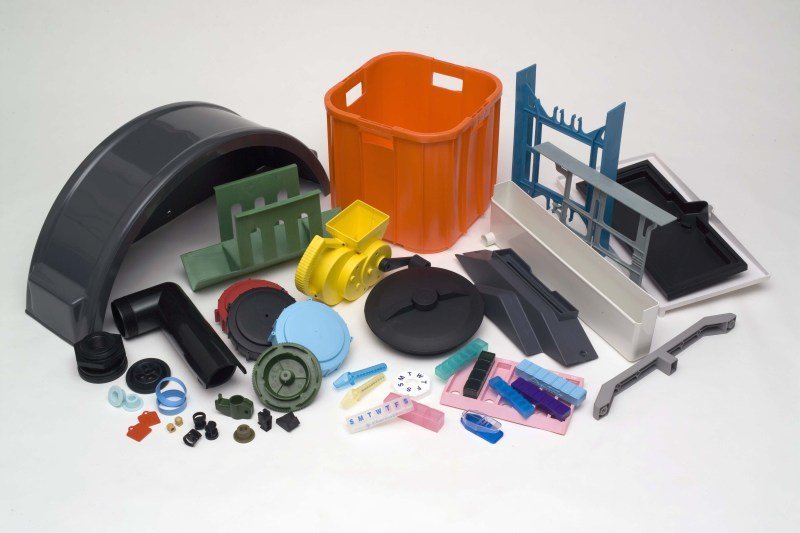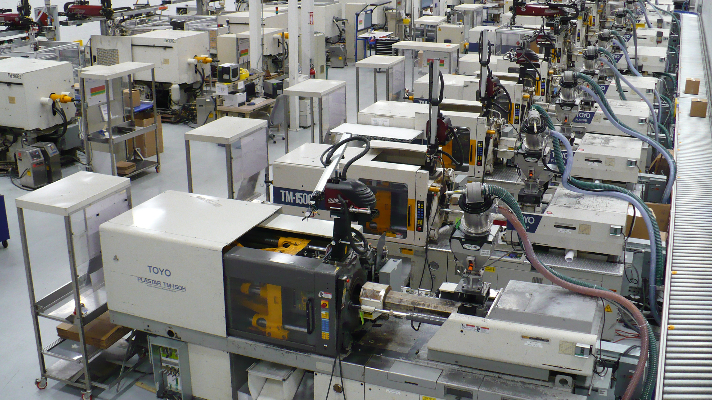Plastic Injection Molding: A Comprehensive Overview to Modern Production Techniques
Plastic Injection Molding: A Comprehensive Overview to Modern Production Techniques
Blog Article
Recognizing the Fundamentals of Plastic Injection Molding Procedures
Plastic injection molding offers as a keystone of contemporary production, providing a systematic method to producing complicated components with accuracy. Discovering these vital components could disclose exactly how even small adjustments can lead to considerable renovations in production results, increasing concerns regarding the capacity for development in this well-known process.
What Is Plastic Injection Molding?
Plastic injection molding is a widely used manufacturing procedure that transforms thermoplastic and thermosetting products into accurate and complex forms. This technique is favored for its ability to create high quantities of identical get rid of exceptional precision, making it an essential approach in different industries, including auto, consumer items, and clinical tools.
The procedure includes thawing the picked plastic product and injecting it right into a mold under high pressure. The mold, made to the specifications of the preferred component, allows the liquified plastic to form as it solidifies and cools. When the product has solidified, the mold and mildew is opened up, and the ended up component is ejected.
Plastic injection molding uses numerous advantages, including minimized waste, uniformity in manufacturing, and the capability to incorporate elaborate styles that may be challenging with other producing methods. Furthermore, it sustains a wide variety of materials, each supplying one-of-a-kind homes that can be customized for particular applications. As markets remain to introduce, plastic injection molding stays at the center, making it possible for the development of sophisticated items that satisfy progressing consumer demands.
The Shot Molding Process
The injection molding procedure is an innovative technique that involves numerous vital stages to create top notch plastic parts. Originally, plastic pellets are fed right into a warmed barrel where they are merged a thick fluid. This molten plastic is then infused under high stress right into a precision-engineered mold, which forms the product into the wanted form.
When the mold and mildew is filled, the plastic is enabled to cool down and solidify, taking the shape of the mold and mildew cavity. Cooling time is crucial, as it impacts the cycle time and the final homes of the shaped component. After sufficient air conditioning, the mold opens, and the finished part is ejected utilizing ejector pins.

Products Utilized in Injection Molding
Numerous materials can be made use of in the shot molding process, each offering one-of-a-kind homes that provide to particular applications. One of the most generally utilized products include thermoplastics, thermosetting plastics, and elastomers.

Thermosetting plastics, like epoxy and phenolic materials, undergo a chemical adjustment throughout the curing process, causing a rigid, inflexible structure. These materials are excellent for applications requiring high warm resistance and structural stability, often utilized in vehicle parts and electric insulators.
Elastomers, including silicone and rubber-based materials, supply versatility and durability. Their distinct properties make them suitable for applications that demand flexibility, such as seals and gaskets.
In addition, specialty products like bio-based plastics and composites are acquiring traction for their environmental benefits and enhanced performance image source qualities, expanding the extent of shot molding applications in numerous markets. Understanding the residential or commercial properties of these materials is essential for choosing the appropriate type for specific projects.
Advantages of Injection Molding
Injection molding sticks out as an extremely reliable manufacturing process that supplies many benefits for creating complicated components with accuracy. One of the most significant benefits is the capacity to develop intricate designs that would be challenging or difficult to attain with other methods (Plastic Injection Molding). The procedure enables comprehensive features and limited tolerances, ensuring top quality parts
In addition, injection molding is known for its quick production capacities, making it an optimal choice for high-volume production. When the mold and mildew is produced, components can be produced rapidly, minimizing lead times and increasing overall efficiency. This efficiency not only lowers production expenses however additionally supplies an one-upmanship in the market.
The convenience of materials utilized in shot molding even more boosts its appeal. A vast Bonuses variety of thermoplastics and thermosetting polymers can be employed, allowing manufacturers to pick products that best satisfy their specific demands, including stamina, warm, and versatility resistance.
In addition, the procedure decreases waste, as excess material can often be reused and reused. This sustainability aspect adds to a reduced ecological impact, making shot molding a responsible production option. On the whole, the advantages of shot molding make it a preferred technique for lots of markets.
Factors Impacting Product High Quality
While countless variables can affect item quality in injection molding, recognizing these elements is essential for achieving ideal results. Key elements include material choice, refining specifications, and mold and mildew style.
Material choice plays an essential role, as various polymers show distinct properties that influence flowability, stamina, and thermal stability. Inadequate product choice can cause defects such as read more bending or insufficient dental filling.
Processing specifications, including temperature, pressure, and cycle time, must be thoroughly controlled. Variations in these setups can lead to incongruities in part measurements and surface area coating. Excessively high temperatures may trigger degradation of the polymer, while poor stress can result in brief shots.
Mold and mildew style is equally important, as it determines the circulation of the molten plastic and the cooling process. Inadequately developed mold and mildews may bring about unequal cooling rates, resulting in dimensional errors and residual stresses.

Final Thought
To conclude, plastic injection molding functions as a critical manufacturing procedure that allows the efficient manufacturing of high-quality parts. Mastery of the shot molding process, including the understanding of materials and the impact of numerous factors on item quality, is vital for accomplishing ideal results. The advantages of this approach, such as cost-effectiveness and design adaptability, further underscore its relevance throughout numerous industries, solidifying its condition as a recommended choice for high-volume production.
Plastic shot molding offers as a foundation of modern manufacturing, giving a methodical technique to generating complex parts with precision.Plastic shot molding supplies a number of benefits, including reduced waste, consistency in manufacturing, and the capability to integrate elaborate layouts that might be testing with other manufacturing methods (Plastic Injection Molding). As sectors continue to innovate, plastic injection molding remains at the leading edge, enabling the development of advanced products that satisfy advancing customer demands
The shot molding procedure is an advanced strategy that includes a number of crucial stages to generate high-quality plastic elements.In verdict, plastic shot molding offers as a crucial manufacturing process that makes it possible for the effective production of high-grade elements.
Report this page